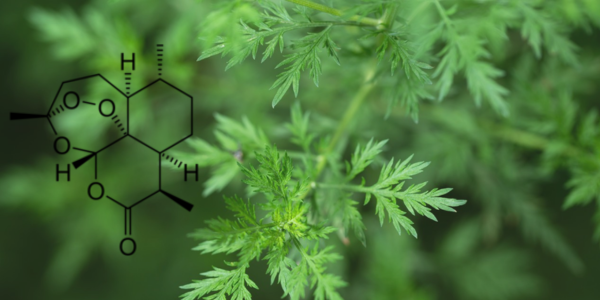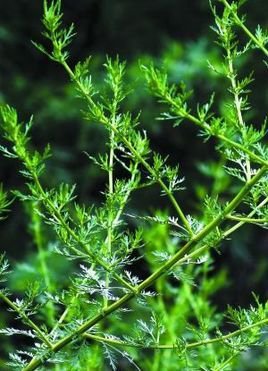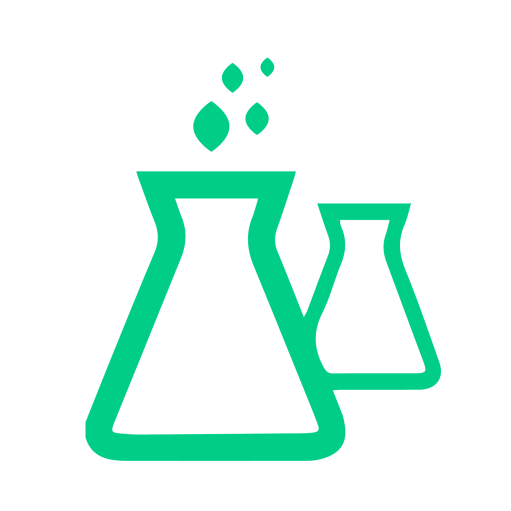
Artemisinin was discovered in 1971 by Chinese scientist Tu Youyou, who was awarded the Nobel Prize in Physiology or Medicine in 2015. In recent years, researchers have uncovered more benefits of this herbal extracts. Besides its ability to combat malaria, it also exhibits strong anti-cancer properties.
Powerful Anti-Cancer Effects of Artemisinin
Artemisinin, also known as qinghaosu, is an effective anti-malarial drug, and recent studies have shown that these compounds also have significant anti-tumor effects. A study on 55 cell lines in vitro demonstrated that artesunate inhibits leukemia, colon cancer, melanoma, breast cancer, ovarian cancer, prostate cancer, and kidney cancer cells[i]. Dihydroartemisinin shows excellent anti-tumor effects on pancreatic cancer, leukemia, osteosarcoma, and lung cancer cells[ii].

Fig 1. Artemisia annua plant
Mechanisms of Anti-Tumor Effects of Artemisinin
Artemisinin and its derivatives exert their anti-tumor effects through multiple mechanisms, including the generation of reactive oxygen species (ROS), induction of apoptosis, inhibition of tumor angiogenesis, cell cycle arrest, and ferroptosis. These mechanisms suggest that Qinghaosu has the potential to be a multi-targeted anti-tumor drug, offering new options for cancer therapy.
–Generation of Reactive Oxygen Species (ROS)
Artemisinin can generate ROS through peroxidation, leading to oxidative stress in tumor cells. Excessive ROS production damages the DNA, proteins, and lipids of tumor cells, inducing apoptosis and necrosis. In particular, in the tumor microenvironment, artemisinin reacts with iron ions to generate ROS, selectively killing iron-rich tumor cells.
–Induction of Apoptosis
Artemisinin induces apoptosis in tumor cells through various pathways, including intrinsic and extrinsic pathways. The intrinsic pathway involves the mitochondrial pathway, where this drug promotes the loss of mitochondrial membrane potential, release of cytochrome c, and activation of caspase-9 and caspase-3, leading to apoptosis. The extrinsic pathway involves death receptor signaling pathways, such as Fas and TNF receptors, which activate caspase-8 and downstream apoptotic molecules.
–Inhibition of Tumor Angiogenesis
Tumor growth and metastasis depend on angiogenesis, and artemisinin has been found to inhibit this process. This herbal extract can downregulate the expression of vascular endothelial growth factor (VEGF) and its receptors.
This action inhibits the proliferation and migration of endothelial cells. As a result, the blood supply to tumors is reduced. Consequently, this limits both tumor growth and metastasis.
–Cell Cycle Arrest
Artemisinin can disrupt the normal cell cycle progression of tumor cells, particularly at the G0/G1 and G2/M phases. By regulating the expression and activity of cyclins and cyclin-dependent kinases (CDKs), artemisinin can halt cell cycle progression, causing cells to arrest at specific phases and inhibiting cell proliferation.
–Ferroptosis
Ferroptosis is an iron-dependent form of programmed cell death. Artemisinin can induce ferroptosis in tumor cells through iron-dependent mechanisms. By reacting with intracellular iron, artemisinin promotes lipid peroxidation, leading to cell membrane damage and cell death. Unlike apoptosis, ferroptosis is characterized by iron dependence and lipid peroxidation, providing a new strategy for tumor therapy.
Artemisinin Combined with Other Anti-Cancer Drugs
Currently, the goal of combining artemisinin with chemotherapy is to maximize efficacy while minimizing systemic side effects. This herbal extract and its derivatives, when used in combination with other anti-cancer drugs, show synergistic effects, enhancing anti-tumor efficacy and reducing resistance that might occur with single-drug use.
1. Artemisinin and Chemotherapy Drugs
Chemotherapy drugs such as cisplatin, doxorubicin, and paclitaxel are common cancer treatments. Studies have found that combining artemisinin with these drugs can enhance their efficacy and reduce their side effects.
Qinghaosu enhances the production of reactive oxygen species (ROS), further damaging the DNA of tumor cells and increasing the cytotoxicity of chemotherapy drugs. Additionally, it can inhibit the repair mechanisms of tumor cells, making the cytotoxic effects of chemotherapy drugs more persistent.
2. Artemisinin and Targeted Therapy Drugs
Targeted therapy drugs such as gefitinib and erlotinib are designed to target specific molecular pathways in cancer cells.
Combining artemisinin with targeted therapy drugs can inhibit multiple signaling pathways in tumor cells through a multi-target mechanism, enhancing cell sensitivity and overcoming resistance that may occur when using targeted drugs alone.
3. Artemisinin and Immunotherapy Drugs
Immunotherapy drugs, such as PD-1/PD-L1 inhibitors and CTLA-4 inhibitors, work by activating the body’s immune system to fight tumors.
Artemisinin can modulate the immune microenvironment and enhance the anti-tumor activity of immune cells. When used in combination with immunotherapy drugs, qinghaosu can further activate the immune response and improve the immune clearance of tumors.
4. Artemisinin and Radiotherapy
Radiotherapy destroys the DNA of tumor cells through high-energy radiation, preventing their proliferation.
Artemisinin enhances ROS production, making tumor cells more sensitive to radiotherapy and increasing its effectiveness. Additionally, it can reduce damage to normal cells from radiotherapy, improving the selectivity of the treatment.
5. Artemisinin and Natural Compounds
Some natural compounds, such as curcumin and resveratrol, have anti-cancer properties.
Combining artemisinin with these natural compounds can synergistically inhibit the proliferation and metastasis of tumor cells through multiple pathways. This combination can also reduce side effects and improve overall treatment effectiveness.
Side Effects of Artemisinin
Like all medications, artemisinin can have side effects and there are precautions to consider when using it.
Potential side effects may include:
- Gastrointestinal reactions: such as nausea, vomiting, diarrhea, and loss of appetite.
- Neurological effects: such as headaches, dizziness, and insomnia.
- Hematological effects: There are reports that artemisinin may cause mild bone marrow suppression, manifesting as a decrease in white blood cells or platelets.
[i] Efferth T, Sauerbrey A, Olbrich A, et al. Molecular modes of action of artesunate in tumor cell lines. Mol Pharmacol, 2003, 64: 382-94
[ii] Lu YY, Chen TS, Qu JL, et al. Dihydroartemisinin (DHA) induces caspase-3-dependent apoptosis in human lung adenocarcinoma ASTC-a-1 cells. J Biomed Sci, 2009, 16: 16
